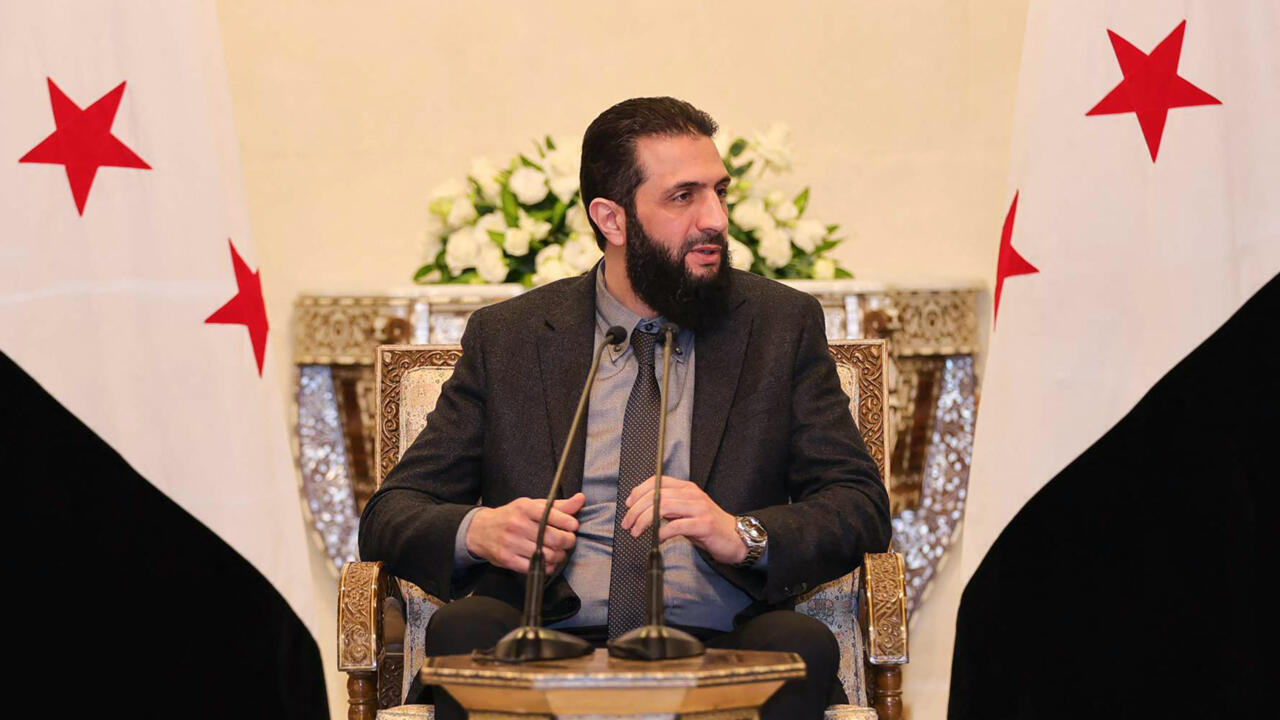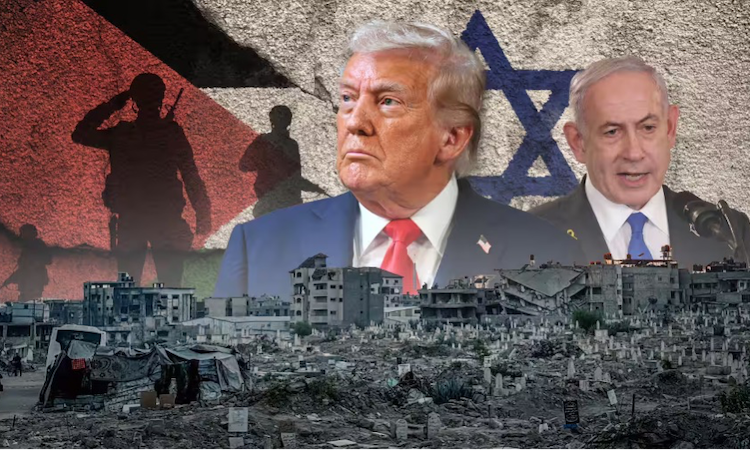The peace talks that resumed in Kazakhstan on 3 May were dominated by the Russian proposal to establish ‘de-escalation zones’ in Syria, with Russia, Turkey and Iran acting as guarantors. On the second day of the conference this proposal was adopted as a memorandum, identifying four geographical areas, namely:
* The province of Idlib.
* The area between the cities of Hama and Homs.
* Eastern Ghouta, in the suburbs of Damascus. (This safe zone does not include the Qaboun area, which is completely in the grip of al-Nusra, the local al-Qaeda franchise.)
* A southern strip of Syria bordering Jordan.
The talks were punctuated by some opposition delegates alternately storming out and trooping back in. And some refused to endorse the final memorandum. However, with Turkey giving the green light, declaring itself ready to cooperate with Russia and Iran in standing as guarantors for the proposed zones, the pressure is now on the ‘moderates’ to demonstrate their ‘non-terrorist’ credentials by abiding by the ceasefire arrangements and breaking definitively with al-Nusra and Daesh.
The United Nations warmly welcomed the initiative. New secretary-general António Guterres was said by a spokesman to be “encouraged by the agreement today in Astana, Kazakhstan, by guarantor countries Iran, Russia and Turkey to de-escalate violence in key areas in Syria”, whilst special UN envoy to Syria Staffan de Mistura praised the deal as “an important, promising, positive step in the right direction in the process of de-escalation of the conflict”. (UN chief welcomes Syria de-escalation zones, RT, 5 May 2017)
Washington’s welcome was grudging and riddled with caveats, with the state department demurring at Iran’s role as guarantor, claiming, in an assertion that stands truth on its head, that Iran had contributed to instability in Syria. However, it was noteworthy that this time around the US was represented at the Astana talks by the acting assistant secretary of state for near east affairs, Stuart Jones, who, if not exactly Henry Kissinger, is at any rate a little further up the diplomatic food chain than the lowly US ambassador to Kazakhstan, to whom the task was entrusted previously, suggesting a dawning realisation in Washington that the US cannot just keep burying its head in the sand over the diplomatic progress being made there.
What kind of ‘safe zones’?
Russia’s embrace of the notion of ‘safe zones’ has misled some into drawing the conclusion that Moscow has walked into an imperialist trap by adopting the same language as Hillary Clinton and the rest. On the contrary, by drawing Turkey into cooperation on this issue and calling the west’s bluff on safe zones, Moscow is showing considerable astuteness. It is important here not to get fixated on terminology, but rather to drill down to the actual content.
Whilst superficially sounding alarmingly like the ‘safe zones’ or ‘no-fly zones’ long demanded by Washington, London, Paris, Ankara and the Gulf states, demands which in reality were intended to build a pretext for all-out war (as happened in Libya) or in preparation for the balkanisation of the country, this master-stroke of diplomacy in fact succeeds in appropriating imperialism’s language whilst radically shifting its import.
Hitherto, when the mouthpieces of imperialism prated about ‘safe zones’, they meant swathes of the Syrian homeland to be taken out of the control of the legitimate government; when they blathered about ‘no-fly zones’, they meant zones from which Syrian and Russian aircraft would be banned, but over which US-led coalition bombers would have free rein. Lest any should be tempted to think that the current Russian proposal has anything in common with ‘safe zones’ of that sort, the Russian envoy to the Astana talks, Aleksandr Levrentyev made clear that the ban on overflights would emphatically include US-led coalition overflights.
The envoy was unequivocal: “As guarantors, we will be tracking all actions in that direction. Absolutely no flights, especially by the international coalition, are allowed. With or without prior notification. The issue is closed.” (US-led coalition warplanes banned from Syria safe zones, RT, 5 May 2017)
Leading by example, Col Gen Sergei Rudskoy announced that “use of the aircraft of the Russian aerospace forces in areas corresponding to the de-escalation zones defined by the memorandum was stopped as of 00.00 on 1 May”, several days before the memorandum was actually signed on 4 May. (Safe zones to stop war in Syria, Sputnik, 7 May 2017)
The purpose of the de-escalation zones plan is twofold. First, it creates the conditions in which humanitarian assistance can be supplied to civilian populations trapped in the fighting: something in which the west always feigned an interest for propaganda purposes whilst in reality continuing to stoke the flames of war. Secondly, it roundly puts the onus on the self-described ‘moderate’ armed opposition to turn their guns on the al-Nusra, Daesh and other gangs that have been agreed by all, at least in words, to be terrorist in character.
For years the Obama administration claimed to be trying to ‘persuade’ the ‘moderates’ into breaking decisively with their partners in crime, to no visible effect. Now the ‘moderates’ have their chance to decide which side they are on, and to act accordingly. This not only puts pressure on the ‘moderates’ to walk the walk, but also on their backers. As Lavrentiev explained: “We decided to go this way to create such zones in which the fight against terrorist organisations will be directly taken up by the moderate opposition themselves with the support of the guarantor countries.” (Russia proposes four de-escalation zones, RT, 3 May 2017)
In practice the ‘de-escalation zones’ are a generalisation of existing Russian and Syrian practice, especially since the 30 December ceasefire kicked in. Even as the memorandum was signed, news came through of the opening up of a humanitarian corridor into the city of Douma (in what is now recognised as the safe zone of eastern Ghouta). Fifty-one trucks laden with food and medicine have been safely escorted to the city by Russian troops, despite an attempt by persons unknown to blow up the convoy.
This development has been made possible by the joint efforts of the Syrian government and the Russian-staffed National Reconciliation Centre, which had persuaded the Jaysh al-Islam terror gang controlling Douma to abandon its fight against Damascus and turn its guns instead on Daesh. Russian deputy defence minister Lt Gen Alexander Fomin suggested that the Astana talks were unusual in that those negotiating for the opposition were not just the usual gang of politicians and émigrés, but actual field commanders “controlling the situation on the ground”. (Safe zones to stop war in Syria, Sputnik, 7 May 2017)
Turkey’s role
How Russia’s peace initiative will fare depends in part on how far Turkey is willing and able to collaborate positively with Iran and Russia in implementing the memorandum. This depends in turn upon how far Ankara is committed to ploughing its own furrow without reference to Washington, in the aftermath of the abortive coup for which President Erdogan holds the US responsible.
It cannot have reassured the US at the end of April to hear Turkey’s foreign minister announce that he was planning to buy from Russia its state of the art S-400 ‘Triumf’ air defence system, equipped with three kinds of missile and radar able to track up to 300 targets in a range of nearly 600km. The minister explained that he had been unable to find a supplier of anything comparable from any Nato country. (Turkey turns to Russia for air defence systems, Brics Post, 30 April 2017)
Still less encouraging for the US will be the report that a senior aide to Erdogan warned that US forces could be ‘accidentally’ hit by Turkish rockets if they stood too close to Kurdish fighters. Ilnur Cevik told a radio audience: “It doesn’t matter whether they are patrolling there … suddenly you happen to see there are a few missiles hit them accidentally too.” (Erdogan adviser: ‘US troops could be accidentally hit’, 21st Century Wire, 4 May 2017)
So Turkey is not behaving much like a staunch Nato member at present, and may see fit to cooperate with Russia’s plan up to a point. How far Turkey’s interpretation of the purpose of safe zones can be brought into sync with Russia’s remains to be seen however.
The key question of who is going to monitor and enforce the de-escalation zones promises to be a thorny one. In addition to Russia, Iran and Turkey, other monitors would be required. Some opposition groups have declared in advance their refusal to accept a monitoring role for Iran. Russia has floated the idea of enlisting the Brics bloc of emerging economies, as well as Kazakhstan itself, which hosted the talks. This may become clearer by July, when the Astana talks are due to reconvene.
Freeing up Syrian Arab Army forces
Whatever the future holds, there are already reports coming through to suggest that local ceasefire arrangements are freeing up Syrian army units, which can then be dispatched to other frontlines, bringing closer the day when full sovereignty is restored to the whole country. One report suggests that “the SAA and its allies are shifting the focus of their military operations following the implementation of the safe-zones agreement signed in Astana”.
For example, it has now been possible to redeploy the Tiger forces and the Qalamoun Shield forces from the province of Hama to strengthen other frontlines against Daesh. (Government forces prepare for large operation in desert Syria, Vineyard of the Saker, 8 May 2017)
And according to a Times report: “The regime (sic) forces turned their attention eastwards immediately after agreeing to a ‘de-escalation’ of the conflict in most of the areas of Syria where it has been fighting non-Isis rebels,” enabling them to throw dozens of armoured vehicles and over 40 tanks into the area around Saba Biyar, on the front line against Daesh. (Assad sends tanks to frontline manned by US-backed forces by Richard Spencer, Times, 16 May 2017)
However, such advances by the patriotic forces are not at all welcome to imperialism, demonstrating as they do the confidence of the Syrian army and its allies to liberate Syria from jihadi occupation without compromise with western-backed proxies. How else can one explain the behaviour of the US-led coalition?
In the course of the advance to the frontline against Daesh, Syrian forces encountered some factions of the west-backed FSA (‘Free Syrian Army’) obstructing the government advance. Then on 18 May, with the clear aim of assisting the FSA factions in their obstruction of Syrian forces, US warplanes bombed a pro-government convoy on the al-Tanf road. This was a criminal violation of Syrian sovereignty, which Syria’s chief negotiator at the Geneva talks described as a massacre. Many lives and much materiel were lost, to the shame of imperialism and the satisfaction of Daesh.
Such outrages will not stop the advance of the Syrian army and its allies – they will only further undermine US prestige on the world stage.
Victory to the Syrian Arab Army!














